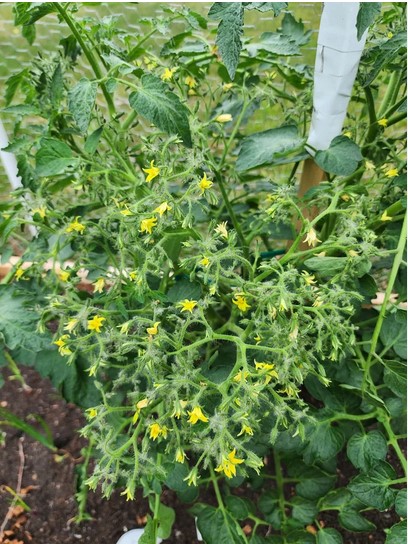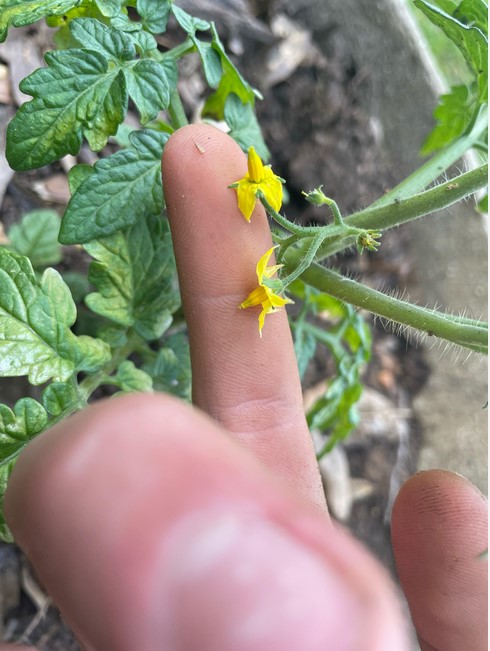Tomatoes are one of the most popular vegetables, technically fruits, grown by home gardeners and commercial farmers alike. Their juicy taste, versatility, and nutritional value make them a favorite in gardens worldwide. However, many growers face a common problem—lush green plants that fail to produce enough flowers, and by extension, fruits.
Increasing flowering in tomatoes isn’t just about planting seeds and waiting; it involves a deliberate approach to plant care. In this article, we will explore the science and practical techniques behind boosting tomato blooms, helping you enjoy a more fruitful harvest.
Why Flowering Matters
Table of Contents
Tomato plants flower as a prelude to fruiting. Each flower has the potential to turn into a tomato, provided pollination occurs. Therefore, the-9 more flowers your plant produces, the greater your chances of getting a higher yield.
If your plant has lots of foliage but very few flowers, you’re likely dealing with an imbalance in nutrients, water, or environmental conditions.
Let’s explore how to address these factors step by step.
How to Increase Flowering in Tomatoes
Now, follow the methods provided below to increase flowering in tomato plants.
1. Choose The Right Tomato Variety

Not all tomato varieties are created equal when it comes to flowering and fruiting. Some naturally produce more flowers than others.
Determinate varieties (bush types) flower and fruit within a short period. They’re ideal if you want a quick, heavy harvest.
Indeterminate varieties (vining types) flower and fruit continuously throughout the growing season.
For increased and prolonged flowering, indeterminate varieties like Sungold, Brandywine, or Sweet Million are great choices. Choosing the right variety gives you a head start in flower production.
2. Ensure Adequate Sunlight

Tomato plants are sun lovers. To flower and produce fruit, they need at least 6–8 hours of direct sunlight each day.
Too little sunlight leads to leggy plants with few flowers.
Optimal sunlight promotes strong growth and abundant blooms.
If you’re growing tomatoes indoors or in areas with limited sun, consider using grow lights to supplement natural light.
3. Improve Soil Quality

Healthy soil is the foundation of any successful garden. Tomatoes need loose, well-draining soil that’s rich in organic matter.
Soil pH – Aim for a slightly acidic pH of 6.2 to 6.8.
Add organic compost to enriches soil with nutrients and improves structure.
Avoid waterlogging and use raised beds or amend heavy clay soils to improve drainage.
You can also mix in well-rotted manure or worm castings for a slow, steady release of nutrients throughout the season.
4. Use the Right Fertilizer

Fertilization is one of the most common areas where growers go wrong. Many use high-nitrogen fertilizers that promote leafy growth at the expense of flowers.
Early stage (vegetative growth): Use a balanced fertilizer like 10-10-10.
Pre-flowering stage: Switch to a fertilizer with more phosphorus and potassium and less nitrogen, like 5-10-10 or 4-8-12.
Frequency: Fertilize every 10–14 days during active growth.
Avoid over-fertilizing, especially with nitrogen-rich products. Too much nitrogen will result in lush green foliage and poor flowering.
5. Prune Strategically
If you’re growing indeterminate tomatoes, pruning can dramatically boost flower and fruit production.
Remove suckers – These are the small shoots that grow between the main stem and leaf branches. Removing them redirects the plant’s energy toward flowering and fruiting.
Prune lower leaves – Improves air circulation and prevents disease, which can indirectly affect flowering.
Be careful not to over-prune, especially in hot climates. Leaves protect fruit from sunscald and help with photosynthesis.
6. Maintain Consistent Watering

Tomatoes need a steady supply of water, especially when they’re forming buds and flowers. Both overwatering and underwatering can lead to stress, causing flowers to drop or fail to develop.
Deep watering: Water the soil thoroughly 1–2 times a week rather than shallow watering daily.
Mulch: Apply mulch (like straw or shredded leaves) around the base to retain moisture and regulate soil temperature.
Inconsistent watering can also lead to blossom end rot, a common issue in fruiting tomatoes.
7. Apply Epsom Salt (Magnesium Sulfate)
Many gardeners swear by Epsom salt as a way to boost flowering and fruit production. It’s not a miracle cure, but it does provide magnesium, an essential nutrient for flowering and fruit set.
Dissolve 1 tablespoon of Epsom salt in 1 gallon of water and apply to the base of the plant every 2–3 weeks.
Magnesium helps in chlorophyll production and strengthens cell walls, aiding in overall plant health and reproductive success.
Do a soil test first to ensure your garden isn’t already high in magnesium.
8. Encourage Pollination

Even with plenty of flowers, poor pollination means no fruit. While tomatoes are self-pollinating, wind, insects, or manual intervention can greatly improve the success rate.
Plant nearby flowers like marigolds, lavender, or borage.
Gently shake the plant or use a soft brush to move pollen between flowers.
Use a small fan or electric toothbrush to mimic the buzz of bees.
Good pollination increases the number of flowers that turn into fruit.
9. Minimize Plant Stress

Tomato plants are sensitive to their environment. High temperatures, strong winds, pests, or diseases can all impact flower production.
Use shading extreme heat (above 85°F/29°C) to prevent flower drop.
Use neem oil or insecticidal soap if aphids, thrips, or whiteflies appear.
Rotate crops yearly, avoid overhead watering, and use resistant varieties when possible.
A stress-free plant is more likely to bloom and fruit abundantly.
10. Use Natural Growth Enhancers
In addition to fertilizers, you can boost flower production with natural biostimulants.
Seaweed extract or fish emulsion -Rich in micronutrients and growth hormones that support flower development.
Compost tea – Adds beneficial microbes to the soil and strengthens root systems.
Apply foliar sprays in the early morning or evening for the best results.
Wrapping Up
Getting tomato plants to flower profusely isn’t about one magic solution—it’s about balancing light, nutrients, water, and care. With the right approach, even a small backyard or container garden can yield dozens of tasty tomatoes per plant.za-2
By following these steps and observing your plants regularly, you’ll be well on your way to enjoying a more abundant and flavorful tomato harvest.
Leave a Reply